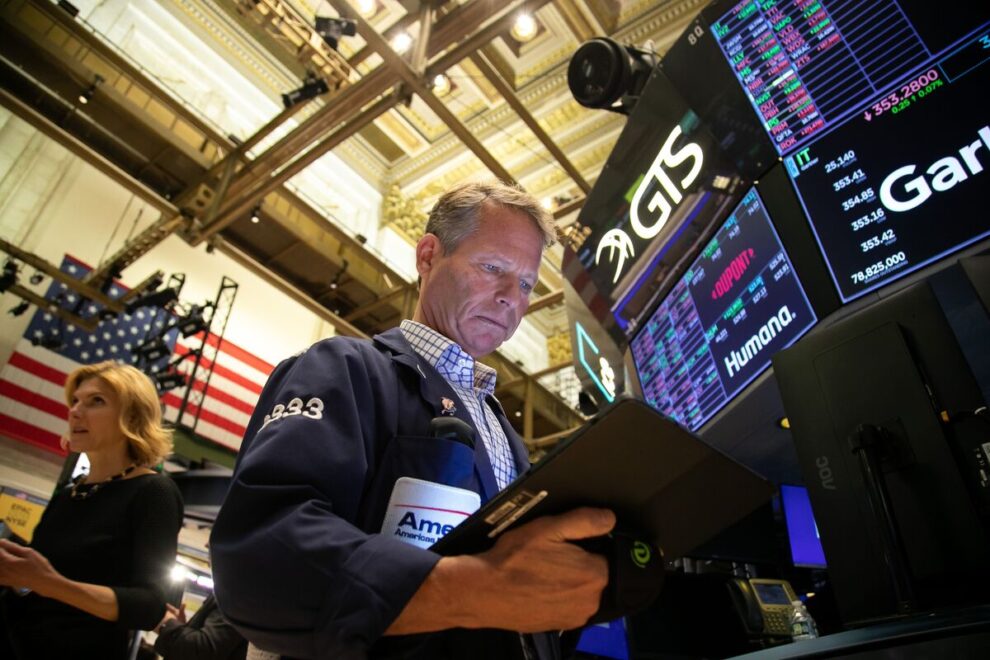It’s the buzz word on Wall Street and in the hallways of the Federal Reserve and Treasury Department. It’s blamed for triggering bond selloffs, shifts in debt auctions and interest-rate policy. That few agree on what exactly it reflects, or how to measure it, seems to matter little — the term premium is a powerful new force in the market.
Typically described as the extra yield investors demand to own longer-term debt instead of rolling over shorter-term securities as they mature, the term premium, in the broadest sense, is seen as protection against unforeseen risks such as inflation and supply-demand shocks, encapsulating everything other than expectations for the path of near-term interest rates.
The problem is it’s not directly observable. Various Wall Street and central bank economists have developed models to estimate it, often with wildly conflicting results. The one thing that most market observers, including Federal Reserve Chair Jerome Powell, can agree on is that in recent months the term premium has soared, likely fueling the dramatic ascent in long-term rates that only recently has started to fade.
The implications for the trajectory of monetary policy are substantial. Powell and other Fed officials have said that the jump in the term premium could hasten the end of their interest-rate hikes by squeezing growth in the economy, effectively doing some of the work for them as they try to rein in inflation. Yet with traders having long struggled to handicap the Fed’s next moves, some warn the central bank’s focus on the notoriously hard-to-understand feature of the US government debt market is making it even more difficult to anticipate the path of rates going forward.
“It seems like a strange door for the Fed to open,” said Jason Williams, a global market strategist at Citigroup Inc. “It’s puzzling as the term premium is something that by definition you can’t know, which the Fed realizes but still is saying its rise is important and can offset some potential hikes.”
Term Premia Roar Back as Inflation Pressures Persist: QuickTake
The term premium is also factoring into fiscal policy. Last week the Treasury Department increased planned sales of longer-term debt by less than most expected. The decision, against a backdrop of swelling US deficits, came after it was advised by an influential panel of bond-market participants to skew issuance toward maturities that are not as sensitive to term-premium increases.
For some, the US’s surging debt supply is itself a likely element pushing the term premium higher.
“This is a very complicated question on what has been driving the long end of the yield curve,” Minneapolis Fed President Neel Kashkari said Tuesday in an interview with Bloomberg Television. “Some people point to term premium, and I always joke that term premium is the economists’ version of dark matter — it’s the residual of all the stuff we can’t explain.”
Kashkari said that if it’s indeed the rising term premium that’s behind the increase in yields, then “it is doing some work for the Fed” by tightening financial conditions. But if other factors are driving the move, such as an increase in the so-called neutral fed funds rate above which monetary policy is restrictive, or forward guidance on the path of policy, then the central bank may have to follow through with further rate hikes to keep borrowing costs elevated.
The term premium, as its name implies, has historically been a positive number, with the New York Fed’s widely-followed 10-year ACM model — named after creators Tobias Adrian, Richard Crump and Emanuel Moench — averaging about 1.5 percentage points since the early 1960s, as far as the data goes back. More recently, however, it’s been decidedly negative, touching a record low -1.66 percentage points in March 2020.
Yet between mid-July and mid-October it went on a tear. Over the span the measure surged more than 1.3 percentage points, flipping to positive for the first time since 2021.
Another popular gauge created by the Fed’s Don Kim and Jonathan Wright shows the metric rising by a more modest, yet still significant, 75 basis points over the span. While both measures have come in between 20 and 35 basis points from their late October peaks, they remain well in positive territory.
Tough to Measure
Powell has said that anything from a heightened focus on fiscal deficits to the central bank’s own quantitative tightening may be behind the term premium’s rise.
Others aren’t so sure.
Term premium models use an estimate for the Fed’s long-run neutral policy rate to then derive how much of current market yields are the result of the abstract measure.
“The thing that makes it hard to model the term premium is that God doesn’t tell you what the expected path that short rates are going to be over the next 10 years,” said Former Fed Governor Jeremy Stein, who’s now an economics professor at Harvard University. He’s warned that estimates for the neutral policy rate may be overly influenced by near-term expectations, resulting in term premium measures that are too high.
If he’s right, the Fed may be overestimating how lasting the recent run-up in yields will be, and how much it will help put the breaks on the economy and inflation.
In fact, the rate on the 10-year Treasury has fallen more than 30 basis points since Powell hinted at his post-Fed meeting press conference last week that the central bank may have reached the end of the current tightening cycle.
“The notion that higher long-term interest rates can substitute for additional monetary tightening depends critically upon why long-term rates have increased,” Bill Dudley, a Bloomberg Opinion contributor and former president of the New York Fed, wrote in a column last week. If term premium measures are accurate, it would justify keeping interest rates steady, he said.
If they’re not, however, “higher short-term rates would be needed to exert the same degree of restraint.”
Tobias Adrian, now director of the International Monetary Fund’s monetary and capital markets department, says that based on expanded models developed with colleagues at the IMF, it’s clear that both the nominal and real term premium have “come up dramatically” this year.
“I usually say it’s the direction of change that matters with term premium, but the level now really matters as well” given how sharply its risen, Adrian said. And the models show that the “market implies that real short rates will actually come back down in the future, thus not seeing a higher long-run Fed neutral policy rate.”
Source: Yahoo Finance















